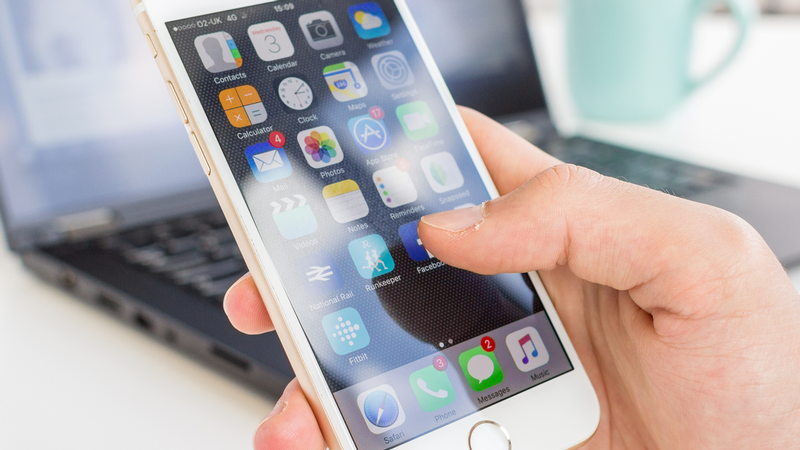How To Use iPhone Gestures

What are iPhone gestures?
iPhones have gained great popularity over the years and with the latest release of the iPhone XR, XS, and the XS Max, these smartphones have become the talk of the town. These devices come with an entire package of various gesture features that have different functionalities. While some of these gestures are straightforward and self-evident, there are still some featured that stay undiscovered. If you happen to be using an iPhone for the first time then you might face difficulty in properly accessing all of its features.
From the controls to the gestures you need to be well versed about, we have compiled everything you need for learning how to access and use these common and uncommon iOS gestures.
iPhone Gestures List are as follow:
Simple Tap
The most common gesture in every Apple device is tapping. You can simply navigate through your phone’s screen with a simple tap. This gesture is mostly used for selecting, accessing apps and anything that is on the display screen of your iPhone in general.
Double-Tap
The notion of a double tap works when you are using a mouse for a desktop application but that is not the case for a smartphone. At times, when you double tap on to the screen of your mobile device, nothing happens. However, if you double-tap the Home Button then it will display you the “Reachability” mode.
This mode is a perfect option when you are using your iPhone one-handedly. This gesture works the best for both accessibility and reachability features. Tap on the Home Button twice and the icons on your screen will be moved to the middle or the bottom of your screen.
Apple introduced this feature after it started to manufacture iPhones with larger screen resolutions. This led to issues in reaching to apps or icons on the display that is why Apple fixed this problem by introducing the double tapping option we just mentioned.
Pinch to zoom in
While rotation and tapping are one of the most common gestures but so is pinching. You can pinch into the screen and expand your index finger and thumb to zoom in to the display even more. You can pinch to zoom into certain content but it can be also used to zoom on photos and videos. However, this gesture only works with media played on the built-in video player app on your iPhone. This gesture allows you to easily look into intricate details without any hassle.
Zoom in to Apple Maps
Most iPhone users tend to pinch the screen to zoom in Apple Maps but it is a rusty approach. Another option is to double tap the screen and it will zoom in for you. You can then double tap to zoom out. The same mechanism works for Google Maps as well.
Rotation gestures
Screen rotation options are available in almost every smartphone of today. You can do the same using the pinching gesture, however, here you have to slide your fingers on the screen towards the direction you intend to rotate the image to. You can rotate images in four directions to an angle of 90 degrees.
Tap and hold the screen with a long press
Tap on the screen and let your finger be in this position for a few seconds. You will notice that the apps and icons on the display will be jiggling in an almost unnoticeable manner. You can drag the icon of your choice towards the “X” symbol on the top of the screen. This symbol is for deletion so if you want to remove or uninstall a certain app then drag it to the “X” and it will be deleted from your iPhone.
Tag and hold to drag icons
The idea of tapping and holding on to the screen works for the deletion of apps but you can use it for another purpose as well. Tap and hold any icon on the screen and drag it to either the left or right side of the screen. This gesture allows you to move any app to the next page and if you have placed it to your preferred place, let your hold go and the app icon will be adjusted there. If you are placing an app over the place where an app already exists then the icons will surely jumble up. Your app will be randomly placed on the screen or on the top of the display as usual.
Tap and hold to create folders
Dragging an icon near another icon would let you place the icons side by side, however; if you drag an app over an icon then you can create a folder that has both the apps. You can assemble similar apps together using this feature. This gesture is present in most of the smartphones and provides you with easy accessibility.
Swipe control
We are mentioning the most common feature in the end and it is used for navigation purposes. You swipe in each of the four directions when you have to navigate through something on your smartphone. However, each swipe in the (left, right, upside, downside) direction depends upon what you are trying to access.
It could be to swipe down to hide the keyboard on your iMessage or you can swipe left to see the details on your iMessage such as the time of the sent and received the message. You can swipe on either the left or the right side if you want to navigate through the entire home display of your iPhone.
The previous versions of the iPhone had an option of additional features underneath the Home button. You could have swiped on the upward direction to access the control panel that had the volume and brightness features. If you want to view your phone’s notifications the just swipe down from the top of the screen and you will be displayed not only notifications but also the active apps on your iPhone.

Get A Free Consultation Today!
Discuss your app idea with our consultants and we'll help you transform them to multi-million dollar reality.
You May Also like
- Technology November 12, 2021
10 Things In iPhone You Should Know Today
The latest iPhone models are none other than the iPhone XR, XS, and the XS Max. These models have been equipped with the upcoming yet innovational features that smartphones of other brands do not poss...
- Technology December 20, 2018
Upcoming 5G Phones 2019: What Is Rumored and What Is Expected
Without a doubt, the upcoming 5G phones technology in 2019 would replace the prior data technologies and almost every phone, by the year 2019, would be integrated with it. While few mobile devices hav...




